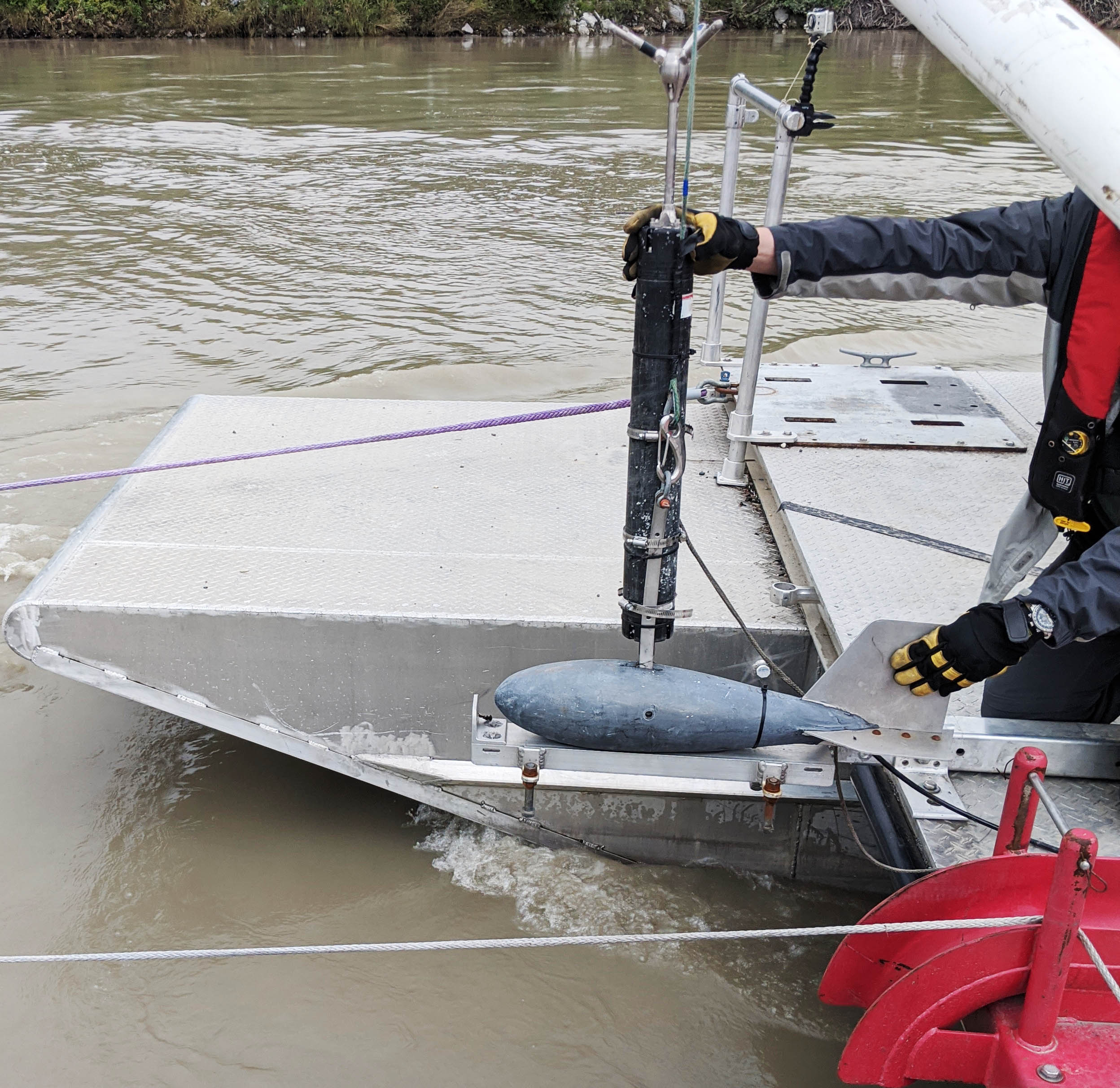Sound Waves Help in Hydrokinetic Deployment

When you think of harnessing the energy from flowing water, sound waves don’t immediately come to mind. But sonar is an important part of hydrokinetic energy. The Alaska Hydrokinetic Energy Research team has been mapping the river bed at the Tanana River Test Site near Nenana. Due to the nature of water levels and increased discharge, this can be a constantly evolving map.
Sonar equipment is fully submerged and works by sending out a sound wave and listening for the pitch of the response. This change of frequency is called Doppler shift. This shift is directly correlated to the velocity of small particles in the water. Turbulence is the chaotic change in the pressure of flow velocity. That turbulence reduces the power production of a river energy converter and increases stress fatigue on its components.
Changes in the riverbed, caused by erosion or deposition, can change the water column characteristics and make it more difficult to deploy and operate an in-river turbine.
These are just a few of the challenges that the AHERC team works on at the test site. Next time you’re standing by the river watching the eddies form and dissipate, you might think about the riverbed below and the chaotic water that is flowing by.
This research is conducted with support from the Department of Energy Water Power Technologies Office.
For more information on AHERC, visit /aherc.
A sonar device is deployed at the Tanana River Test Site. Photo by Emily Browning.


